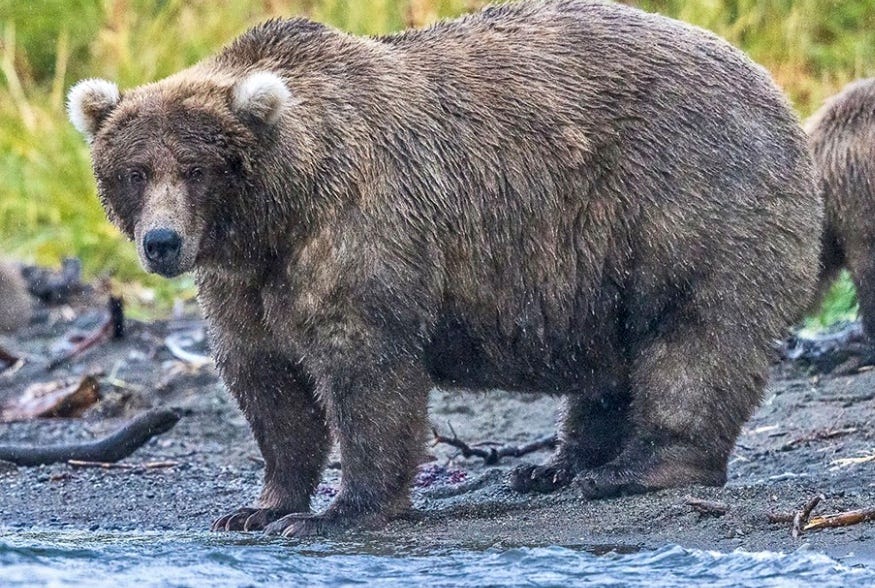California's calamitous climate recall; plus the one thing COP26 must accomplish
Welcome to Callaway Climate Insights. COP26 is 47 days away. Our Countdown to COP26 investor event is 23 days away on Oct. 7. Details to come.
Callaway Climate Insights publishes Tuesdays and Thursdays for everybody. To get our insights and analysis every day, please subscribe.
Lake Tahoe, famed for its brilliantly clear blue waters, is at risk from the ash and smoke particles drifting in from the Caldor wildfire nearby. Readings of the lake’s water clarity show a decline, but scientists are trying to determine if the clouding is temporary or if there will be lasting damage to the lake’s crystal waters. The lake has a mean depth of nearly 1,000 feet. Photo: Thank You (21 Millions+) views/flickr.
Every year or two for the past six decades, Californians live up to their national reputation as whacked-out, ungovernable nut jobs and try to recall their governor between election cycles. The last time they succeeded, in a recall over blackouts and runaway energy prices, we got Arnold Schwarzenegger.
Today another recall election takes place and at stake is the head of Gov. Gavin Newsom, who is blamed among other things for Covid, drought, wildfires, water shortages, energy mismanagement, and a taste for fine French food and wine.
While Newsom is projected to survive the vote, the possibility that a new Republican governor could appoint a new Republican Senator if the aging Dianne Feinstein retires in the next year, thus altering the 50-50 balance of power in the U.S. Senate, makes the election nationally important to the Biden Administration. Important enough to drag the president out west yesterday to plug for Newsom.
While the maniacal political process that allows these recalls could be discussed for hours, the important thing for readers of this newsletter to understand is that while Covid and mask mandate controversies will eventually go away, energy and climate disasters are here to stay in California. And no governor to date has done what will be needed to guide the state, a major fossil fuel producer, out of its emergency.
Whatever happens today, another gubernatorial election is just a year away. So like drought and wildfires, California politics is set to burn on until someone takes control. If they can stay in charge.
More insights below. . . .
Don’t miss The Great Repricing, a four-day virtual conference on ESG investing held by Gitterman Asset Management from Sept. 21-24. To get a 10% discount on tickets, use the code DavidC100 when you sign up here.
Don’t forget to contact me directly if you have suggestions or ideas at dcallaway@callawayclimateinsights.com.
If COP26 accomplishes only one thing, it needs to be this
. . . . There are over 1,900 climate-related laws worldwide and 1,700 reporting standards, including 360 ESG accounting standards, writes Neno Duplan, founder and head of environmental software company Locus Technologies, in a special guest column for Callaway Climate Insights. If COP 26 accomplishes nothing else, it should be putting in gear a process to find common emission reporting standards once and for all, he argues. Who knows? A task force might even decide existing financial accounting standards, which already have teeth, are good enough. . . .
Tuesday’s subscriber insights: To divest from Big Oil or stay and fight

. . . . The dynamics going on in the fight to tame Big Oil and its emissions are polarizing. Divest, say some, such as Harvard University did last week. Stay on as an insider and have influence, say others, such as Engine No 1, which pushed Exxon to start changing its ways. While maybe not as revolutionary, one of these ways seems to actually be working. Read more here. . . .
. . . . There are aspirational climate pledges, and then there is the pledge by U.S. airlines to move to 100% sustainable aviation fuels (SAF) by 2050, which while fabulous if true, has done nothing to move airline stocks. Higher costs for SAF make the likelihood of a full scale transition in the next few years, at least from our current vantage point, seem somewhat pie in the sky. Read more here. . . .
. . . . A fight is shaping up over a new a tax bill saying that union-made electric vehicles will get bigger tax breaks than those made by their non-union competitors. Elon Musk is furious, as are Honda and Toyota, which also have non-union shops. But this pandering to labor organizations by the Biden Administration could backfire. Read more here. . . .
. . . . Does bad weather make you feel bad? And vice versa? Well, it may be that the opposite affects ESG investing. Bad weather increases enthusiasm, according to a new study. So you should pray for a fierce winter if you have ESG investments. Read more here. . . .
Editor’s picks: Fat Bear Week 2021; a third of Americans suffered from a climate disaster this summer

Get ready for Fat Bear Week
Who cares about fat bears? We do! And so should you. Fat Bear Week, hosted by Katmai National Park and Preserve in Alaska, is an annual celebration of success. For bears, fat equals survival, and fat bears are a sign of Katmai’s important and healthy ecosystem. The NPS notes that at Katmai, bears are drawn to the large number of salmon readily available from roughly late June through September. Salmon have long since been the lifeblood of the area, supporting Katmai’s people, bears and other animals. Fat bears exemplify the richness of this area, a wild region that is home to more brown bears than people, and the largest, healthiest runs of sockeye salmon left on the planet. How it works: Held over the course of seven days and ending on Fat Bear Tuesday, the first Tuesday of October, people chose which bear to crown in this March-Madness style bracket where bears are pitted against each other for your vote. This year, Fat Bear Week will start Sept. 29 and conclude on Fat Bear Tuesday, Oct. 5. Last year, more than 640,000 votes were cast. Read more and get ready to vote here.
Almost a third of Americans hit by a weather disaster this summer
Nearly one in three Americans live in a county hit by a weather disaster in the past three months, according to a new Washington Post analysis of federal disaster declarations. Also, 64% live in places that experienced a multi-day heat wave — phenomena that are not officially deemed disasters but are considered the most dangerous form of extreme weather. In this special report, Sarah Kaplan and Andrew Ba Tran report that the expanding reach of climate-fueled disasters shows the extent to which a warming planet has already transformed Americans’ lives. At least 388 people in the U.S. have died due to hurricanes, floods, heat waves and wildfires since June, according to media reports and government records. Read the full report here.
Data driven: Keeping count of CO₂ emissions
. . . . So far in 2021, about almost 30 billion tons of CO₂ have been emitted into our atmosphere. In all of 2019, about 43.1 billion tons of CO₂ from human activities were emitted into the atmosphere. This was an all-time high, breaking the previous record from 2018. The emissions could form a giant “CO₂ cube” measuring 30 km on each side, according to TheWorldCounts. Emissions from human activities have caused the concentration of CO₂ in the Earth’s atmosphere to go up from around 275 parts per million (ppm) before the industrial revolution to over 410 in 2020 — a 50% increase. . . .




